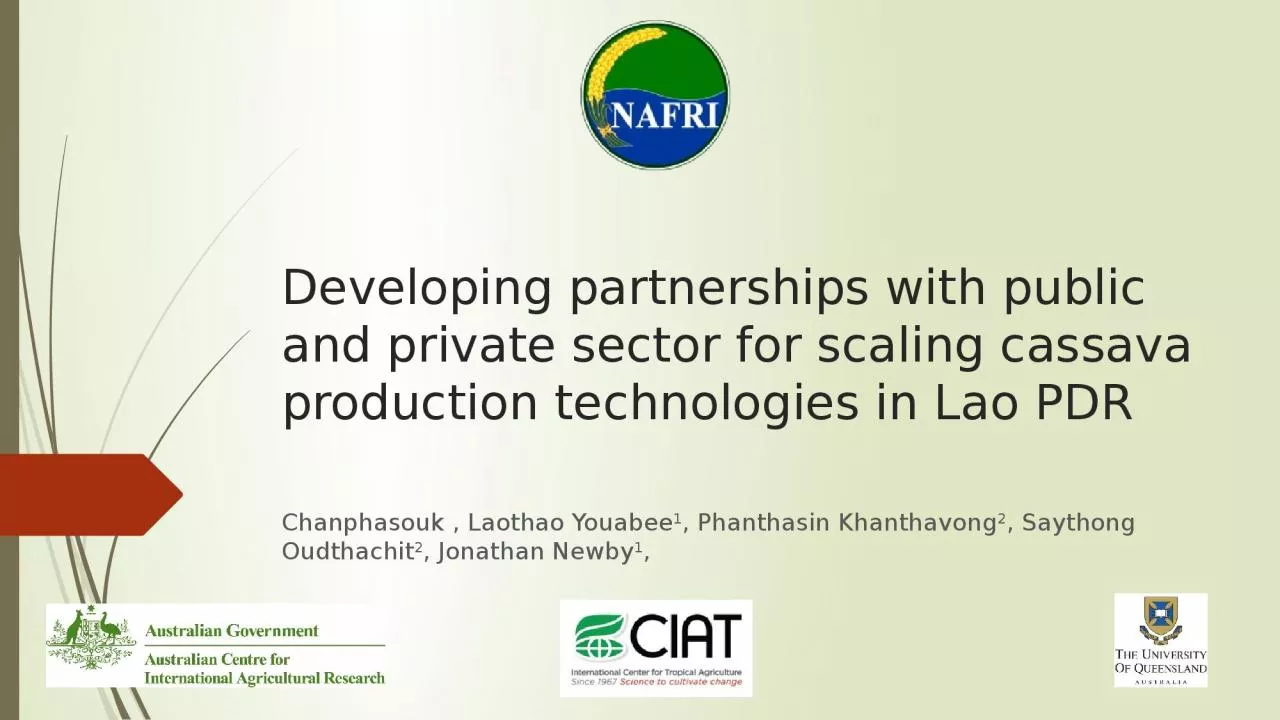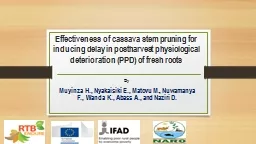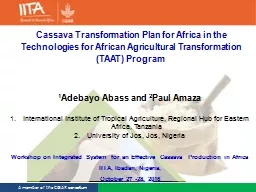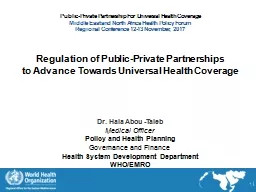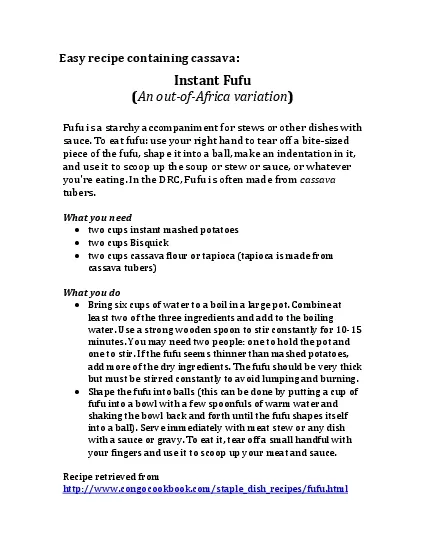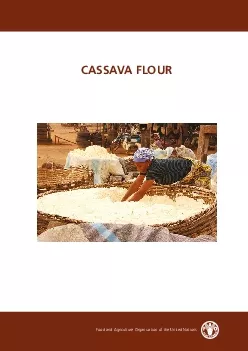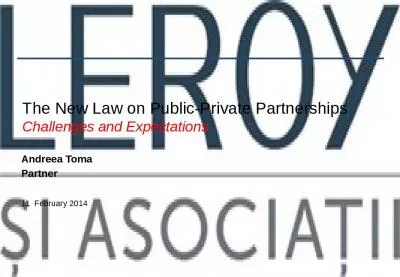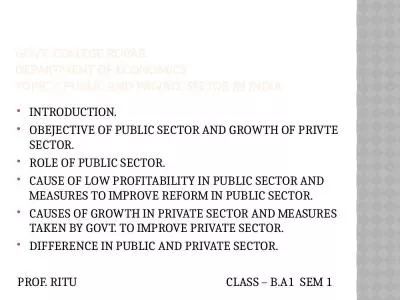PPT-Developing partnerships with public and private sector for scaling cassava production
Author : sophie | Published Date : 2024-02-02
Chanphasouk Laothao You a bee 1 Phanthasin Khanthavong 2 Saythong Oudthachit 2 Jonathan Newby 1 Outline Key points from yesterday Cassava market chains
Presentation Embed Code
Download Presentation
Download Presentation The PPT/PDF document "Developing partnerships with public and ..." is the property of its rightful owner. Permission is granted to download and print the materials on this website for personal, non-commercial use only, and to display it on your personal computer provided you do not modify the materials and that you retain all copyright notices contained in the materials. By downloading content from our website, you accept the terms of this agreement.
Developing partnerships with public and private sector for scaling cassava production: Transcript
Download Rules Of Document
"Developing partnerships with public and private sector for scaling cassava production"The content belongs to its owner. You may download and print it for personal use, without modification, and keep all copyright notices. By downloading, you agree to these terms.
Related Documents

